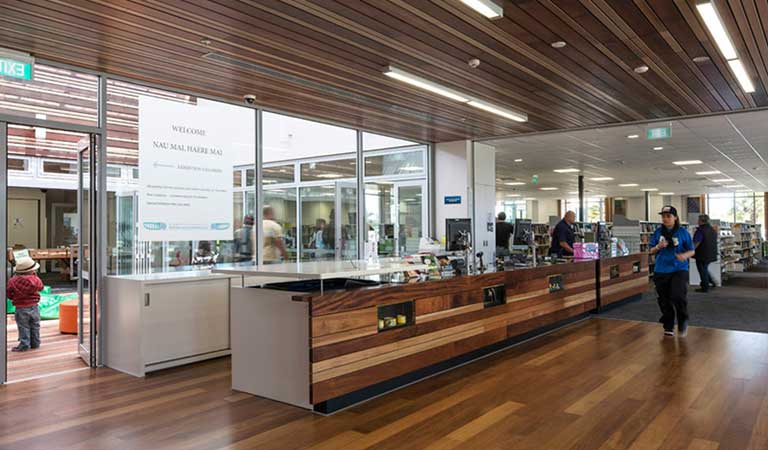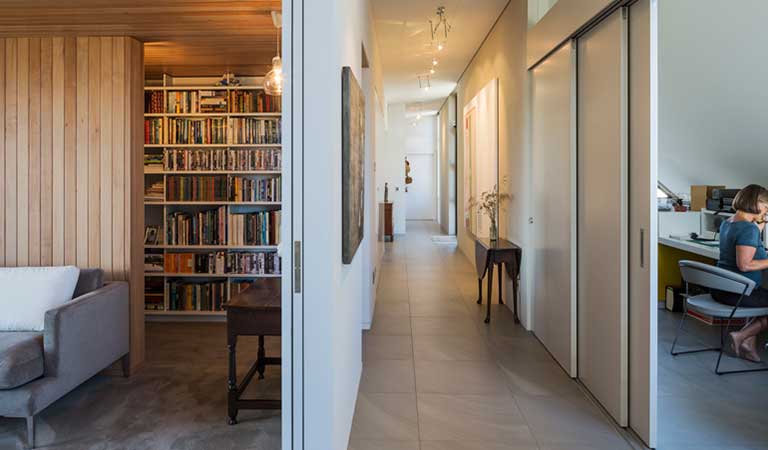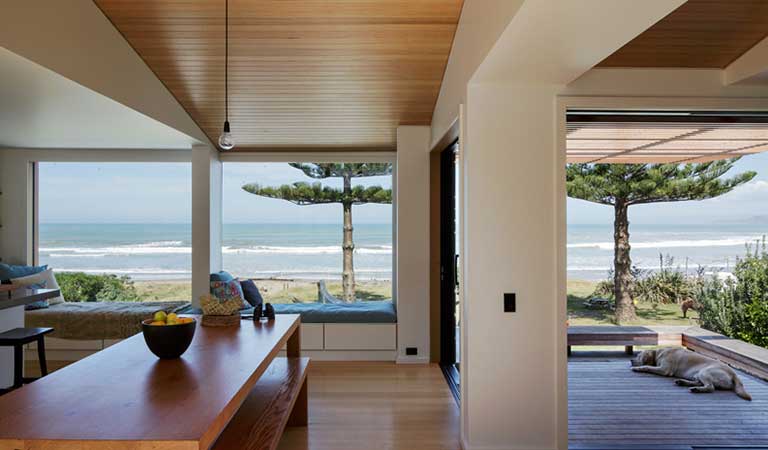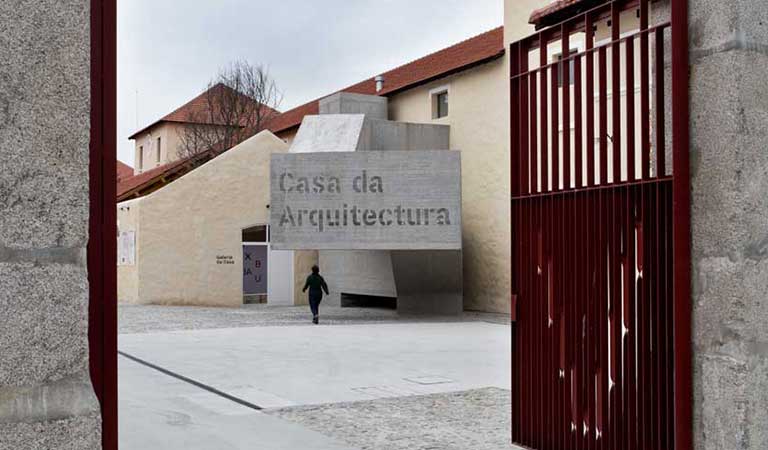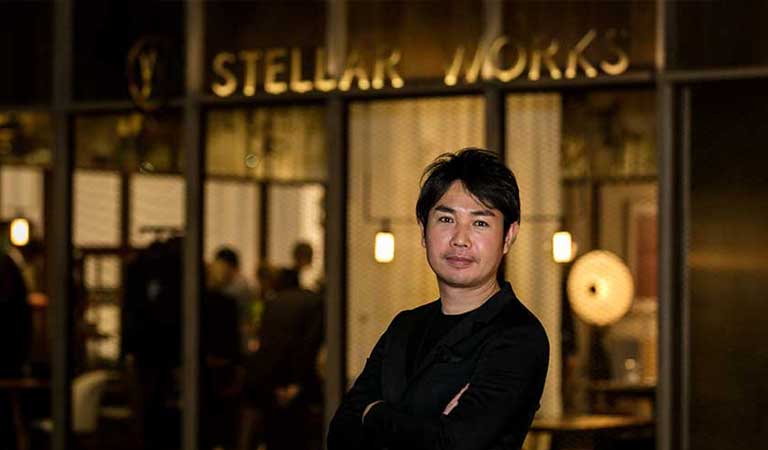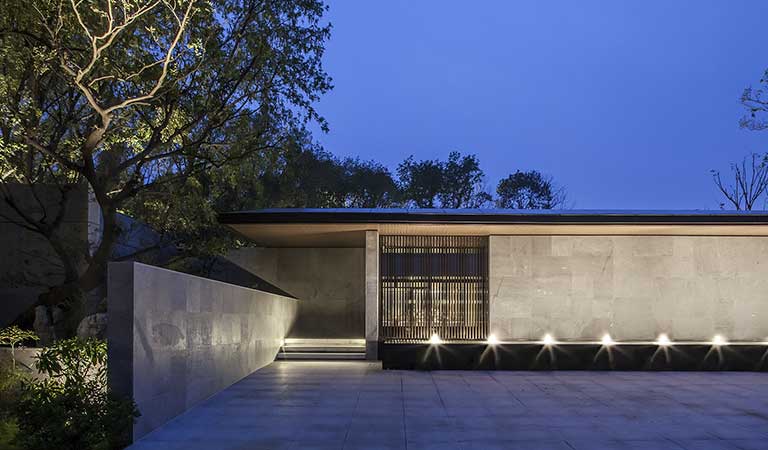PROFILE
Irving Smith Architects
— Office —
We live in a quite a small city in a particularly beautiful part of New Zealand, so everyone that lives here, makes a choice to live here and not in a big city. So we have this nice collection of people at the office. And the office is configured with an enormous table down the middle, and that’s sort of how we work…and it allows us to be quite communal. Everyone understands what’s happening and everyone is part of everything.
Everyone knows what’s going on with our jobs. We are more than the the sum of our parts because of that, everyone commutes.
Basically it’s almost like as you learn architecture on the university. We run it pretty communally and everyone’s on everything, and it’s really based on, if everyone’s around the big table it’s easy to get that big answer right.
I think it makes the philosophy of the practise, it kind of penetrates on everyone on the staff as well, it’s not just something we’re holding on. Everyone understands where we’re going and what the important things are at our job, and I think that helps.
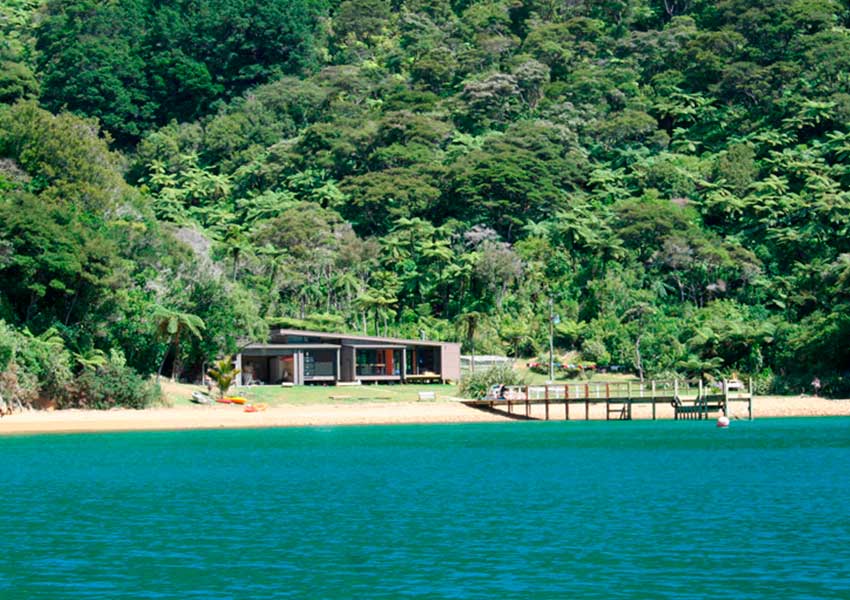
Cherry Bay house
© Patrick Reynolds
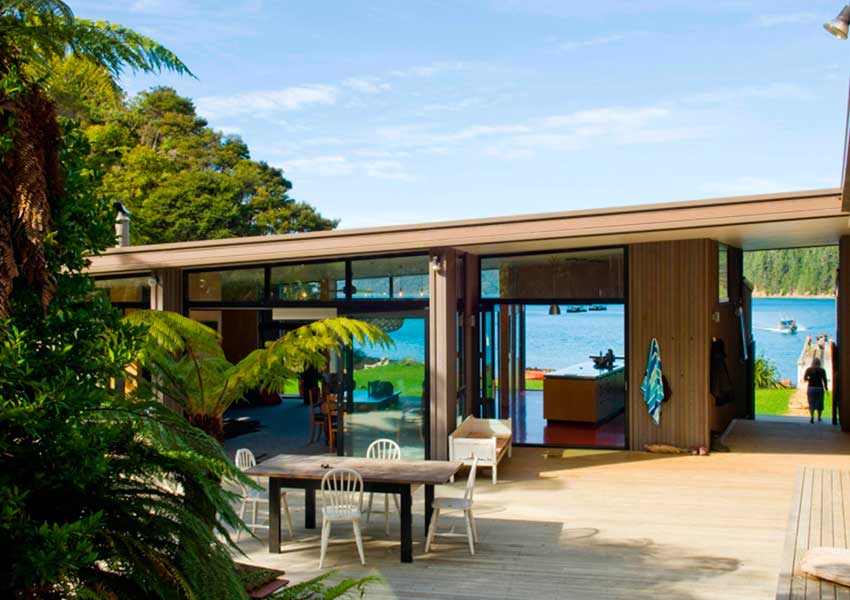
Cherry Bay house
© Patrick Reynolds
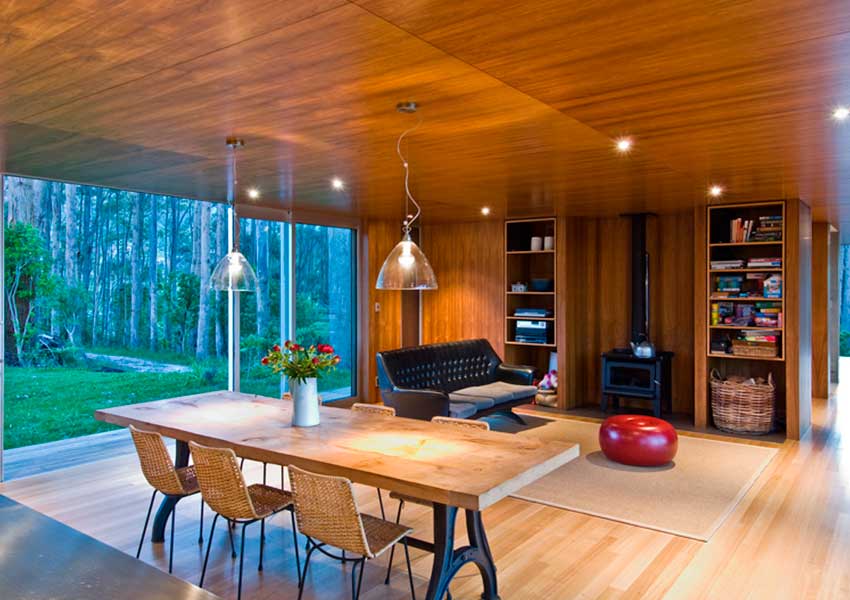
Bach with two roofs
© Paul McCredie
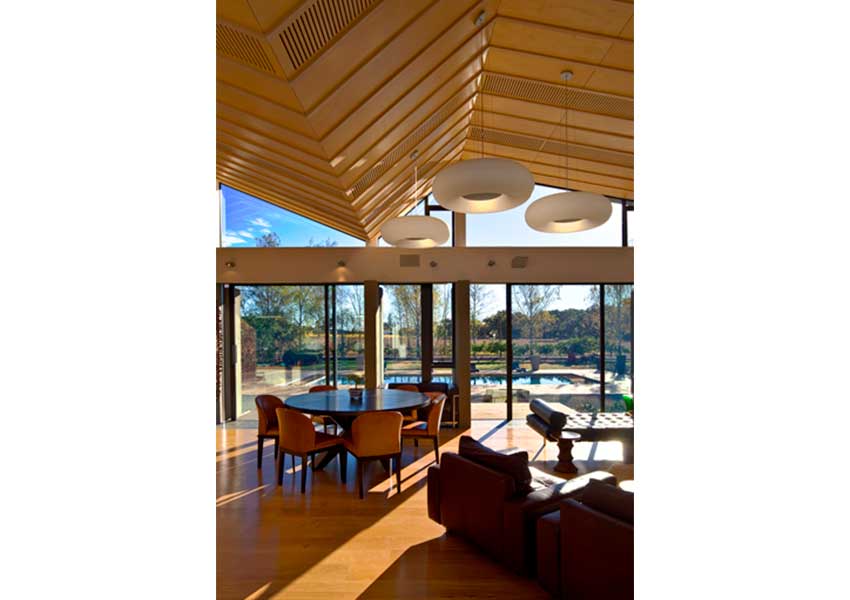
Mountain Rang house
© Patrick Reynolds
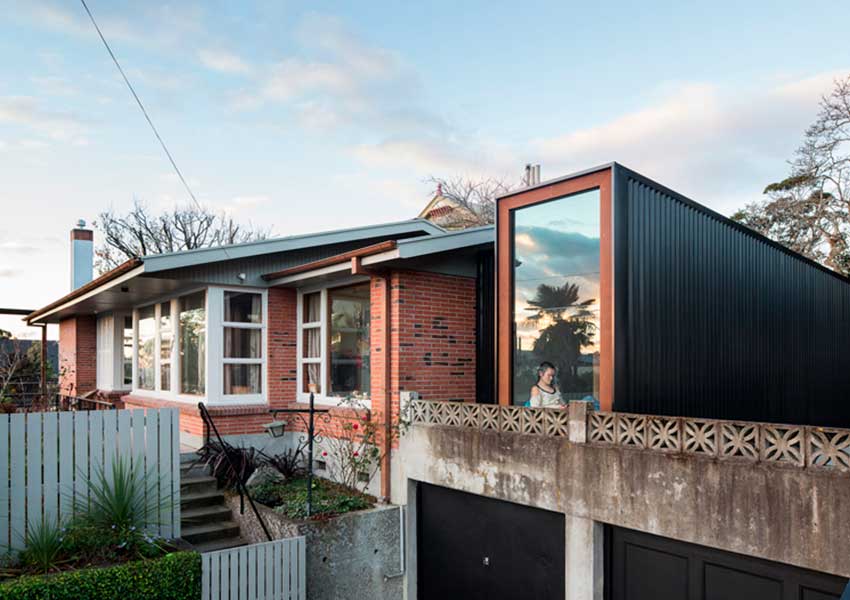
Bonita Room alteration
© Patrick Reynolds
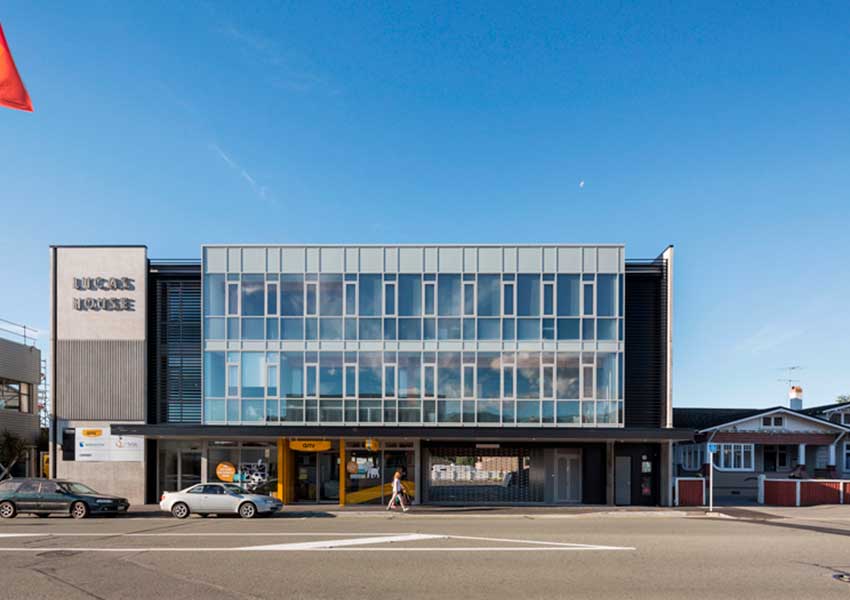
Lucas house
© Patrick Reynolds
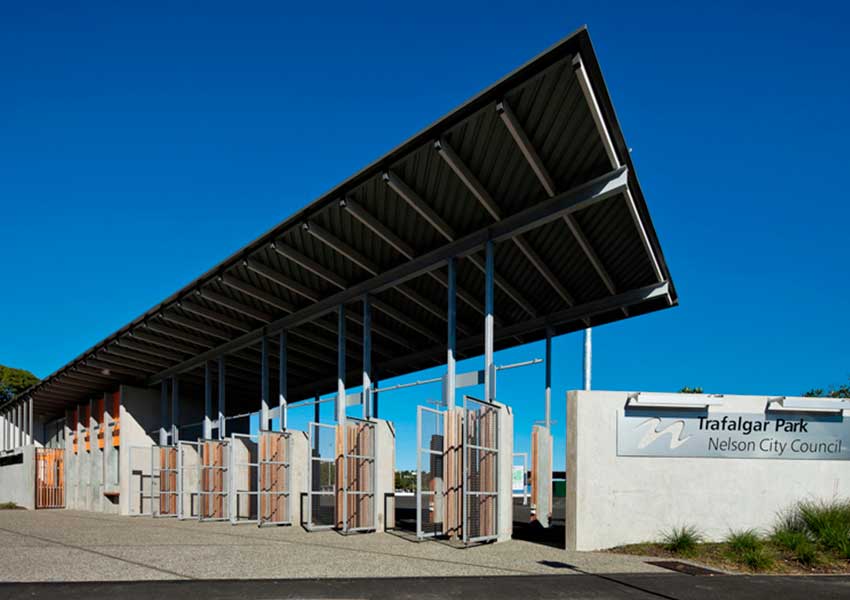
Trafalgar Park upgrade for Rugby World Cup 2011
© Patrick Reynolds
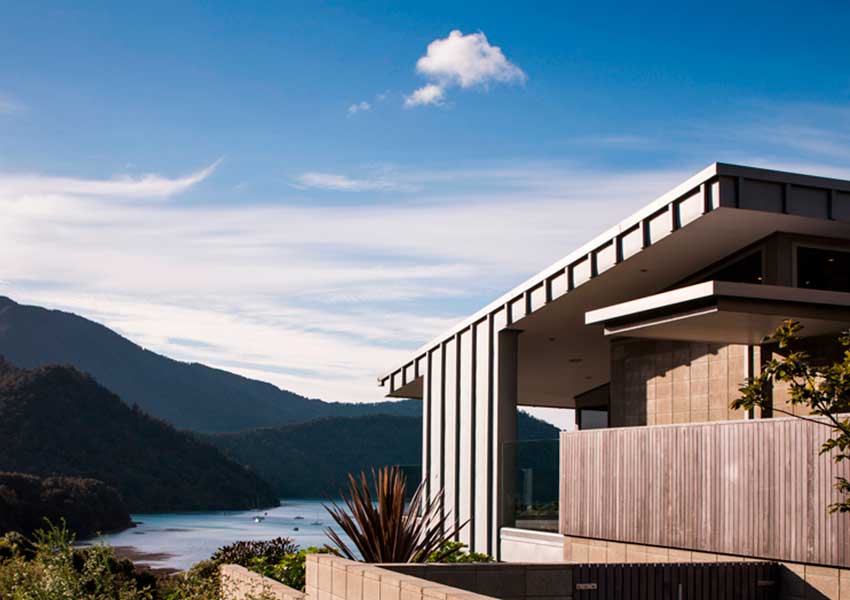
Marlborough Sounds Retreat
© Patrick Reynolds
PreviousNext
— Approach —
As a practise we tend to like projects that we have to research, and that are unusual and that probably have a question, you know, that we have to solve something. And they are all different, so we kind of see that as a way of taking on this slightly unusual projects in different parts of the country, wherever they are and then research finds a a way to fit it.
…Our approach to context we sort of called it soft architecture in soft context, and it’s this notion that New Zealand is the last place to be inhabited, and once it got inhabited it was changed quicker than any where else. The great irony to New Zealand which promotes itself as being amazingly green, and has got all this amazing wilderness that you can get to very easily. But it’s actually one of the most contemporary landscapes in the world because most of it has been changed very recently.
What we’re interested in is that, we understand the context we’ve got better, before we make new context. As most of the world is trying to make new landscape, new context, we’re so young that our idea is that you participate, you learn what you got, and you participate with the context.
— Building —
I guess the questions we tend to ask ourselves is “what’s the best building we can make?” and “do we need it?”, if we take “that” out is it still a decent building? And that’s the nature of this prevention economy.
We do it reductively, if every element - we sort of talk about elements in buildings here - if every element we put in a building does one thing that’s ok…but if we can make an element do two things or three things, if we can make something do more than one thing, then you’ve reduced the amount of stuff you have to do but somehow your architecture is clearer, more legible and more understandable.
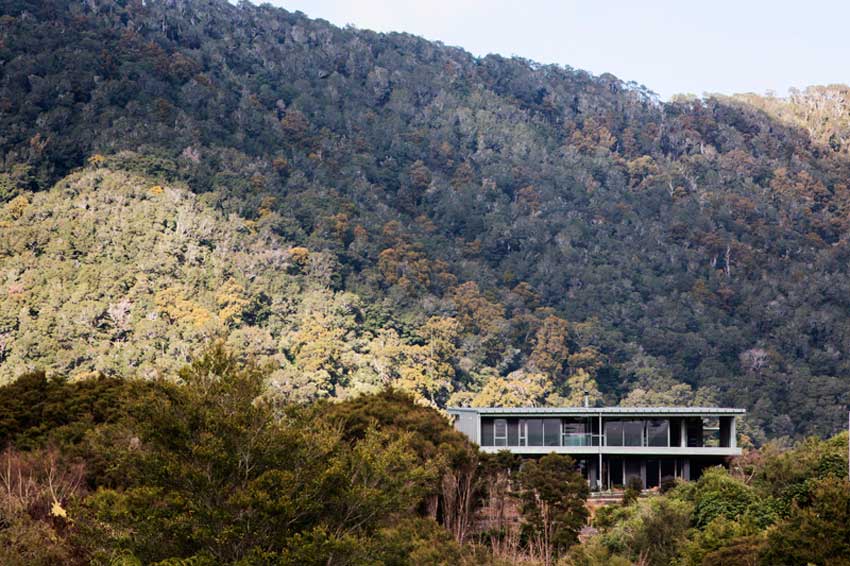
Marlborough Sounds Retreat - © Patrick Reynolds
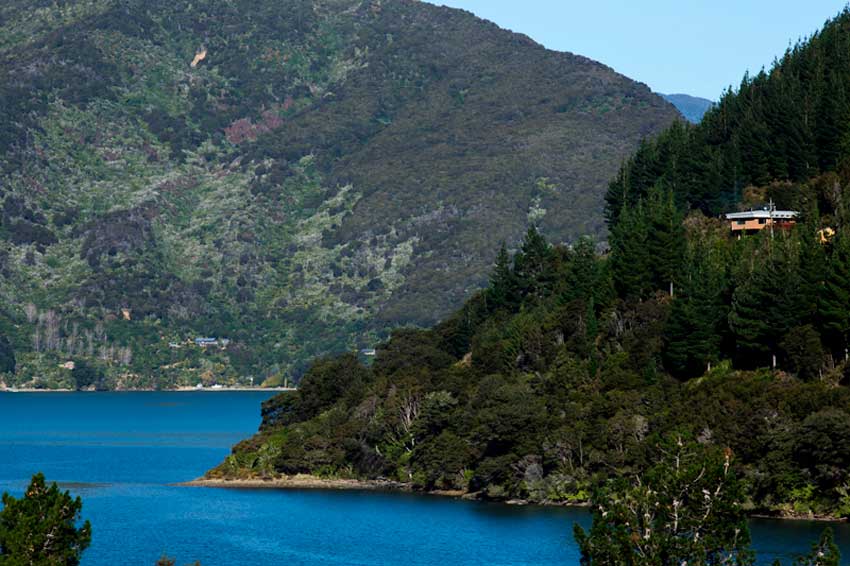
Bach to view the sounds - © Patrick Reynolds
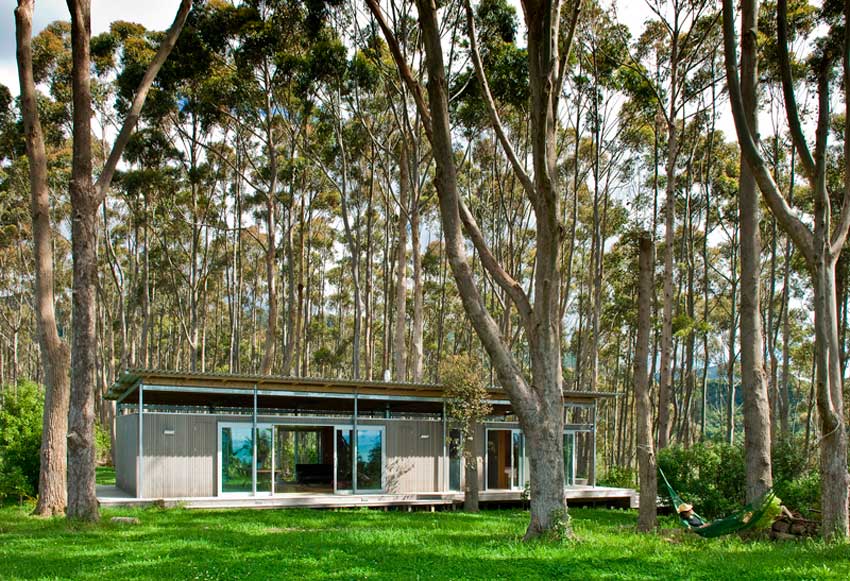
Bach with two roofs - © Paul McCredie
— Context —
We need to consider context, we need to consider the surrounds, and we need to think about a way that we can maybe be a first positive step in establishing a broader context over time.
I think it’s something New Zealand architects are quite good at. New Zealand architects are very interested in context through the landscape, not just us. But partly because we have a country that has changed so much and that has so few people living in it, that we get to work in this landscapes that lot of city architects perhaps wouldn’t.
— Being an architect in New Zealand —
In New Zealand there aren’t that many of us, and we do get quite a significant impact on our environment. And for us, you know we’re practicing in a prevention scenery so we almost accidentally, do the work we do and is important in that context.
But we’re in the middle of a succession of building industry calamities that make compliance you know… to get a building consent and getting something constructed and getting it signed off is hard!! Harder that it’s been for so long. So one of the things to me about being an architect in New Zealand is trying to rise above that. Trying to put this all concern with the little stuff on one side and focus on making positive, meaningful wilderness, every time we get the chance.
The other thing is there’s a real sense of team in the way we make buildings here. We’re often working with the same builders, often working with the same clients and they don’t always start out as clients who share our vision…there’s an act of winning small battles often that mean that the quality and the nature of what we make improves every time.
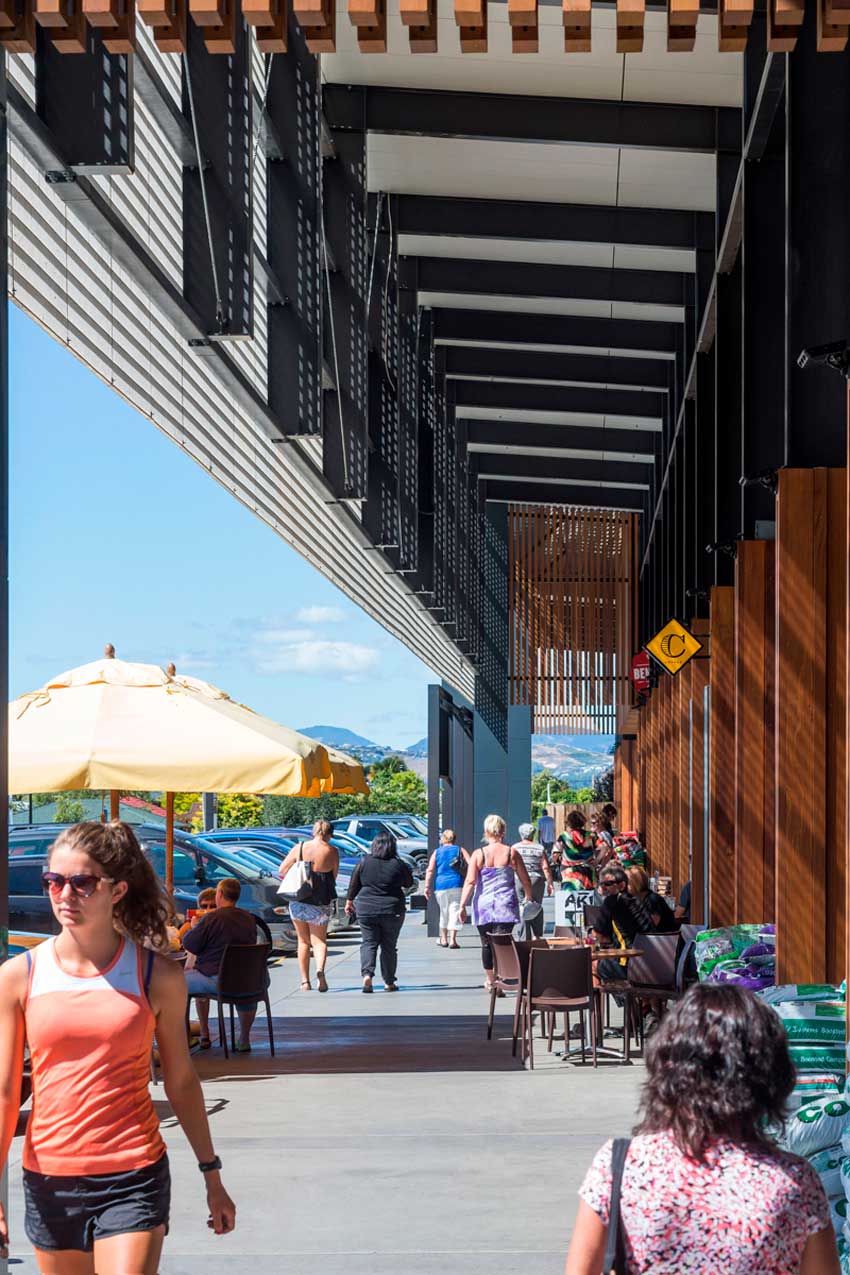
Upper Queen Street - © Patrick Reynolds
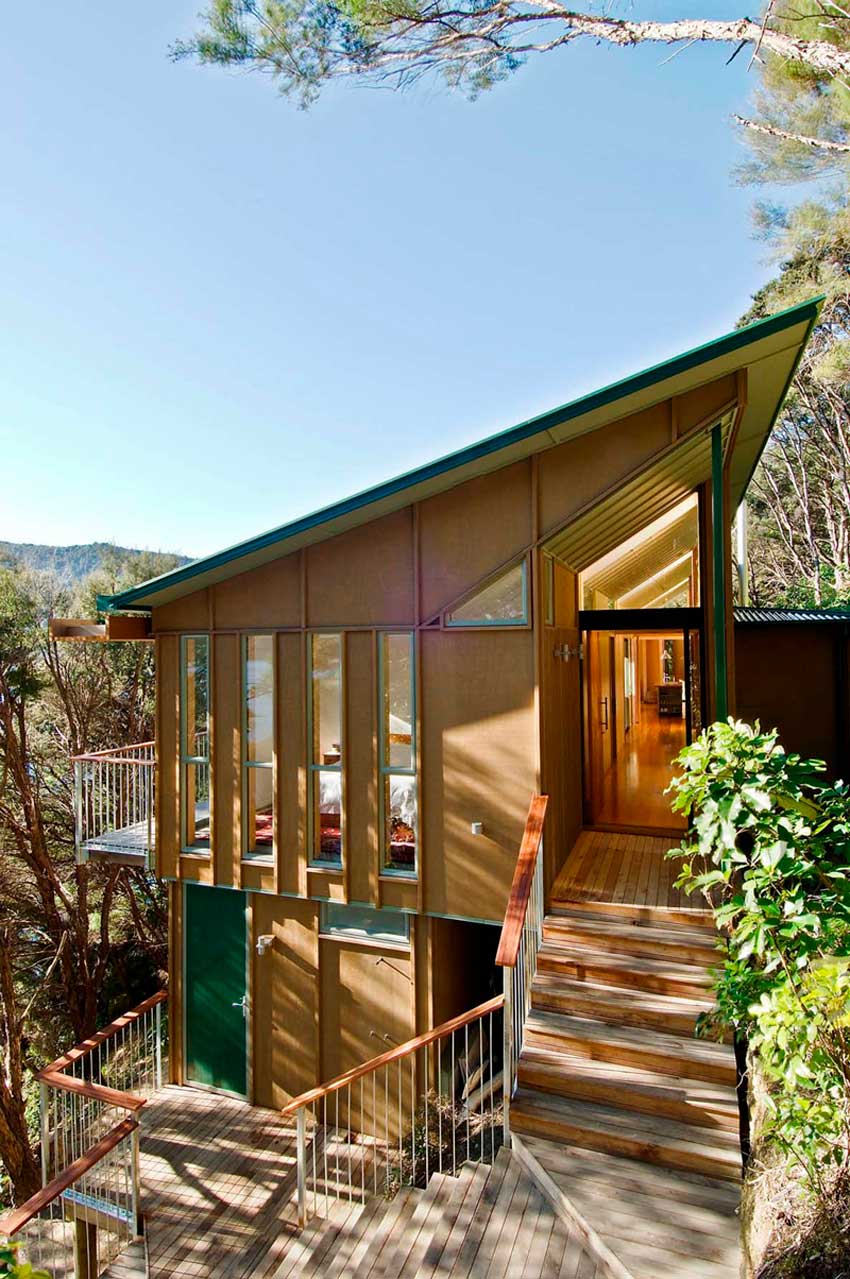
Kumutoto Bay Bach, Queen Charlotte Sound - © Patrick Reynolds
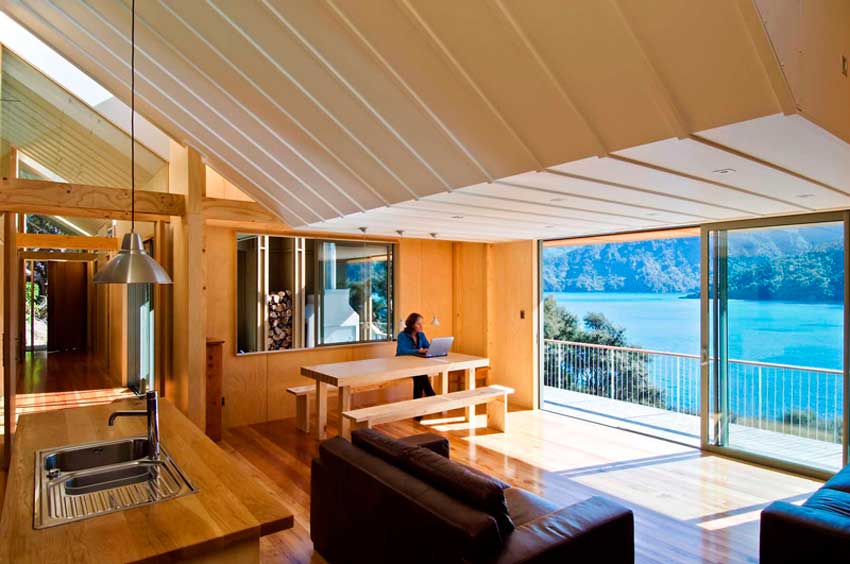
Kumutoto Bay Bach, Queen Charlotte Sound - © Paul McCredie
— Favourite material —
The right one for the job!
That’s part of that stripping away and finding the question. I think a lot of our approach after is probably constructional, that thing about elements and the key to unlock it, it’s finding the right material not just doing the same thing.

Mountain Rang - © Patrick Reynolds
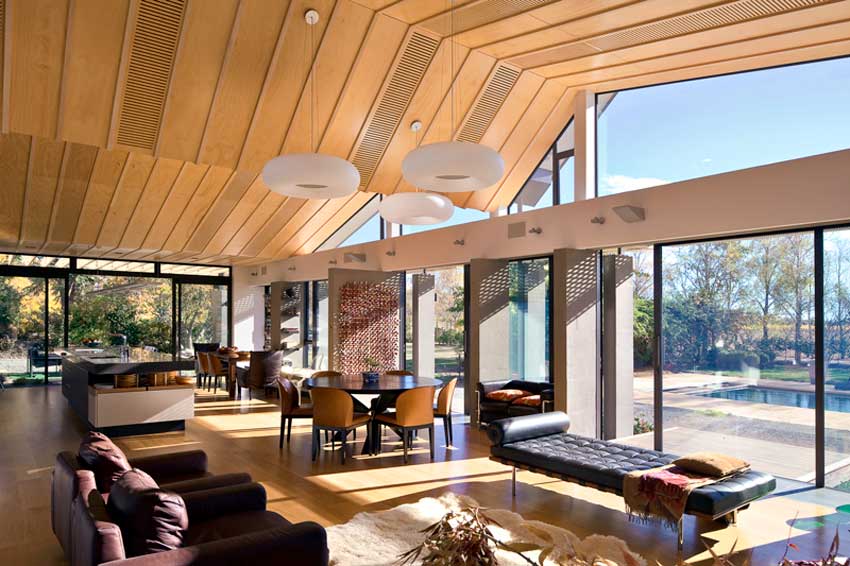
Mountain Rang - © Patrick Reynolds
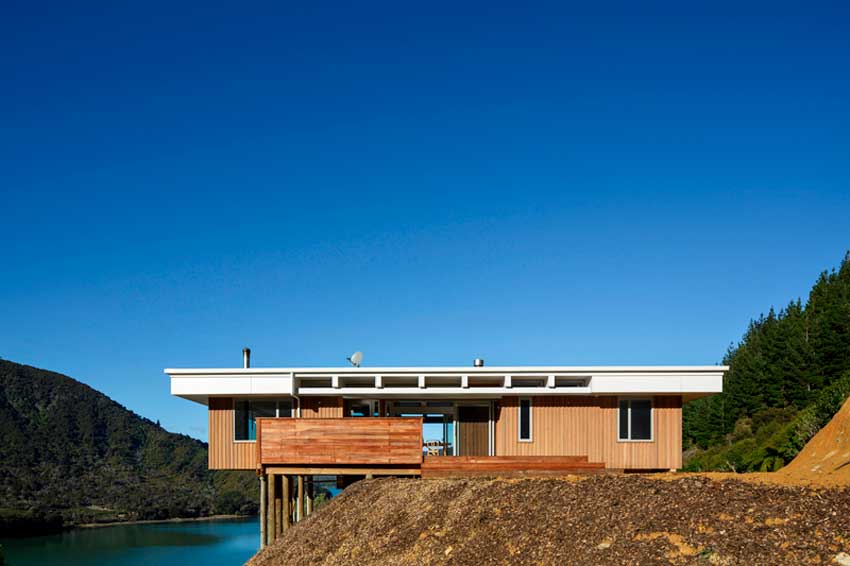
Bach to view the sounds - © Patrick Reynolds

















